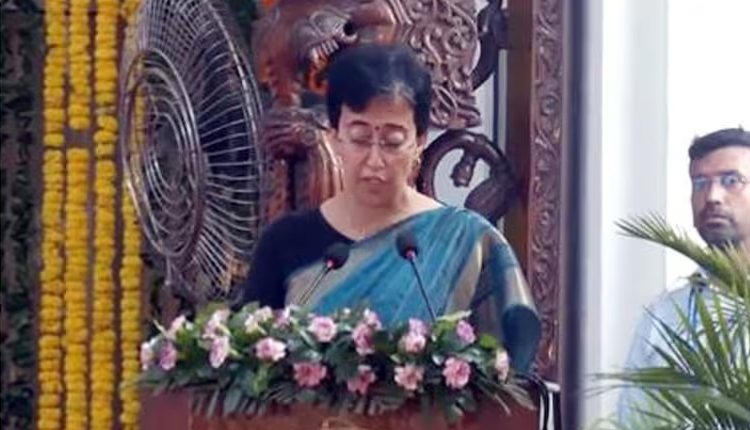New Delhi: In a landmark political development, 43-year-old Atishi has been sworn in as the new Chief Minister of Delhi, succeeding Arvind Kejriwal after his resignation. The Lieutenant Governor administered the oath of office to Atishi, marking a new era in Delhi politics. After her appointment, Atishi expressed her gratitude to Aam Aadmi Party (AAP) leader Arvind Kejriwal, who played a pivotal role in her political journey.
Atishi’s rise within the AAP has been swift and impressive. She entered politics through the Anna Hazare movement and gained prominence within the party after 2019. Elected as an MLA for the first time in 2020, she rapidly climbed the political ranks. By 2023, she was a cabinet minister, and now in September 2024, she has become Delhi’s Chief Minister.
Atishi’s early political involvement came through her connection with AAP founders Yogendra Yadav and Prashant Bhushan. Initially working in policy-making roles, she joined forces with Manish Sisodia after AAP formed its government in 2015. Despite rumours that she might leave the party alongside Yadav and Bhushan during their fallout with AAP, Atishi remained steadfast and continued to work closely with Sisodia.
One of Atishi’s notable contributions was her influence in establishing Delhi’s model schools, which were a significant step in the state’s education reforms. She served as an advisor in the Ministry of Education until 2018, earning recognition for her efforts to improve the quality of education in the city.
Her political career faced a setback during the 2019 Lok Sabha elections when she contested from the East Delhi seat but lost to BJP’s Gautam Gambhir, finishing third with 17.44% of the vote. However, she bounced back in the 2020 Delhi Assembly elections, where she won from the Kalkaji constituency, defeating BJP’s Dharamveer by a margin of 11,000 votes.
Following her victory, Atishi was inducted into AAP’s Political Offences Committee (PAC), the party’s top decision-making body, and became a prominent face at AAP’s press conferences, especially during the 2022 liquor scam controversy. Her ability to effectively represent the party in the media further solidified her standing within AAP.
In 2023, after the resignations of senior AAP leaders Manish Sisodia and Satyendar Jain, Atishi was brought into the cabinet by Kejriwal and was entrusted with key portfolios such as finance and education. Her growing stature in the party became evident when she was considered by Kejriwal to hoist the national flag on Independence Day—though the Lieutenant Governor rejected the nomination.
Kejriwal’s resignation on 15 September 2024 sparked speculation about who would succeed him as Chief Minister, with six main contenders emerging within AAP. These included Sunita Kejriwal, Gopal Rai, Kailash Gahlot, Saurabh Bhardwaj, Kuldeep Kumar, and Rakhi Birla. However, the final decision favoured Atishi.
Several factors contributed to Atishi’s appointment as CM. Her close association with Kejriwal and Sisodia played a significant role; Atishi is known to share a strong bond with both leaders, whom she considers her “Rakhi brothers.” The second reason behind her rise is related to internal party dynamics, particularly following the Swati Maliwal episode. Maliwal, once a close ally of AAP, had become a dissenter, and Atishi’s elevation is seen as a way to mitigate the fallout. Additionally, Atishi’s appointment as Chief Minister reflects AAP’s desire to enhance women’s representation in leadership roles, as she remains the only prominent woman leader in the party’s upper ranks.
With her appointment, Atishi has become a trailblazer, ushering in a new era for the Aam Aadmi Party and Delhi politics. Her leadership and policies are now set to shape the future direction of the capital’s governance.



Comments are closed.